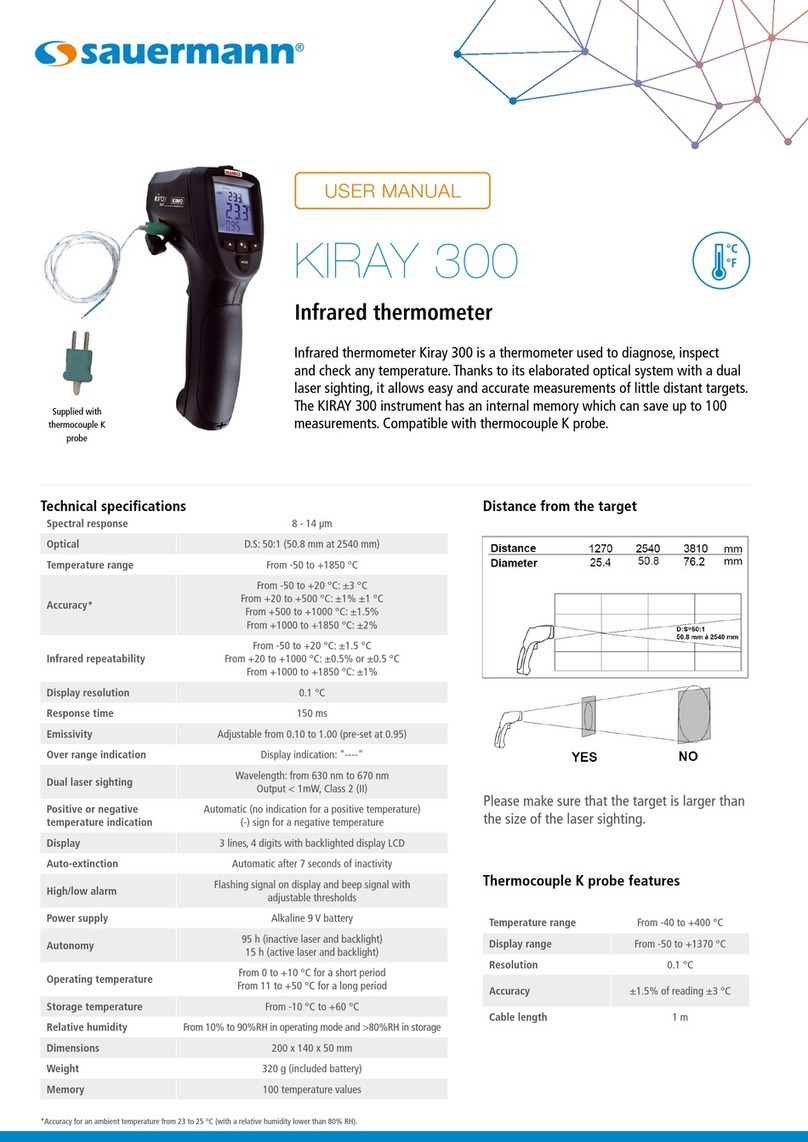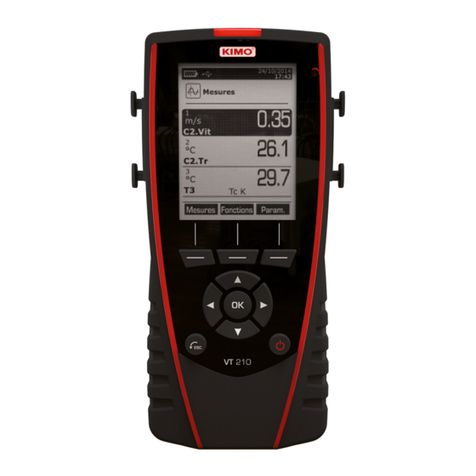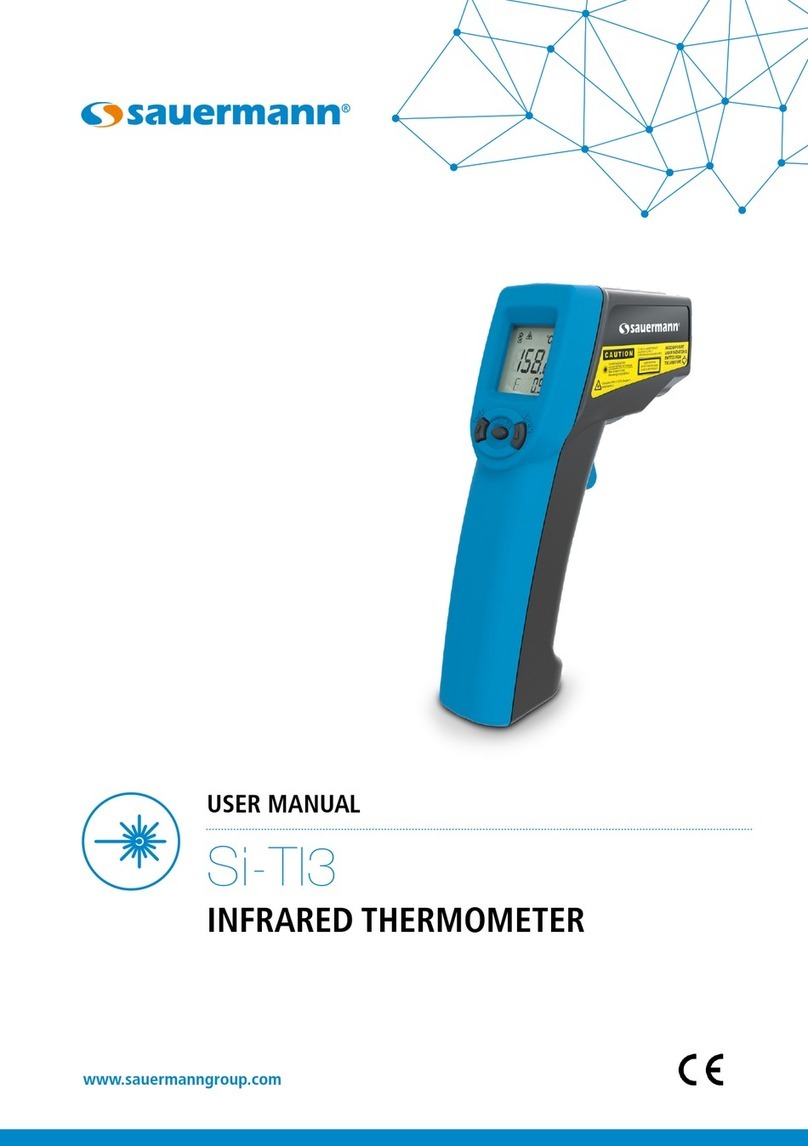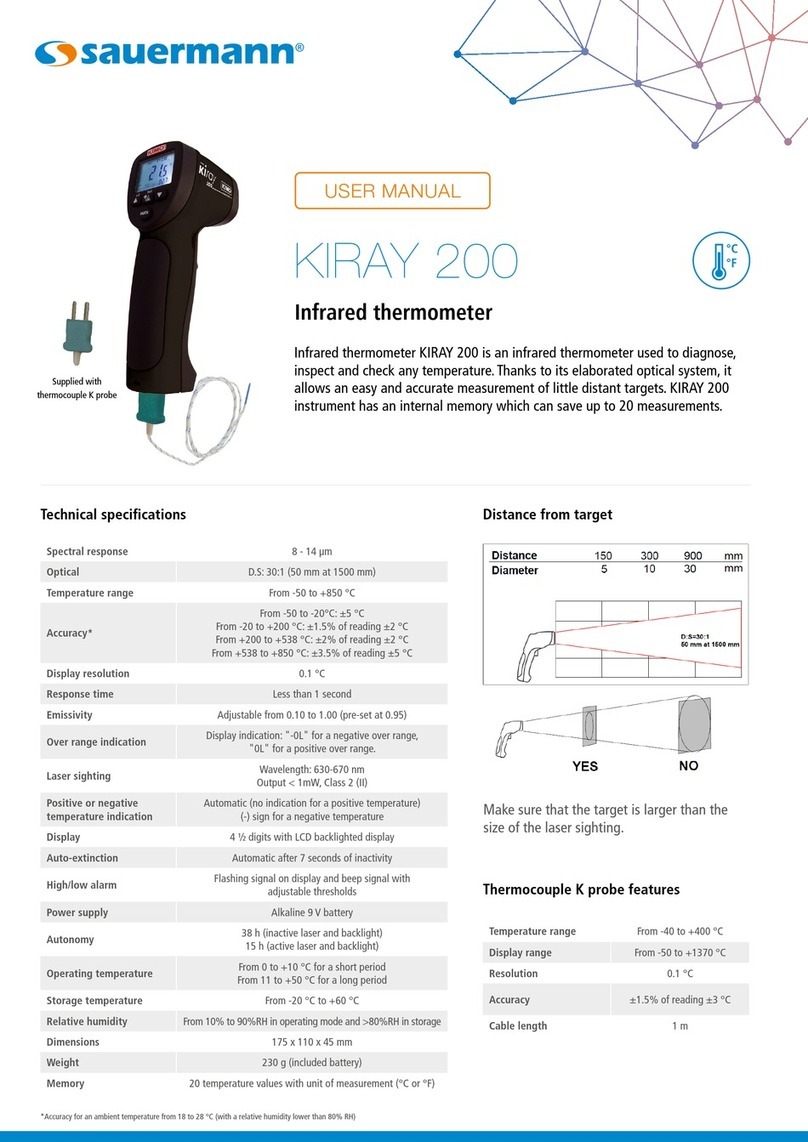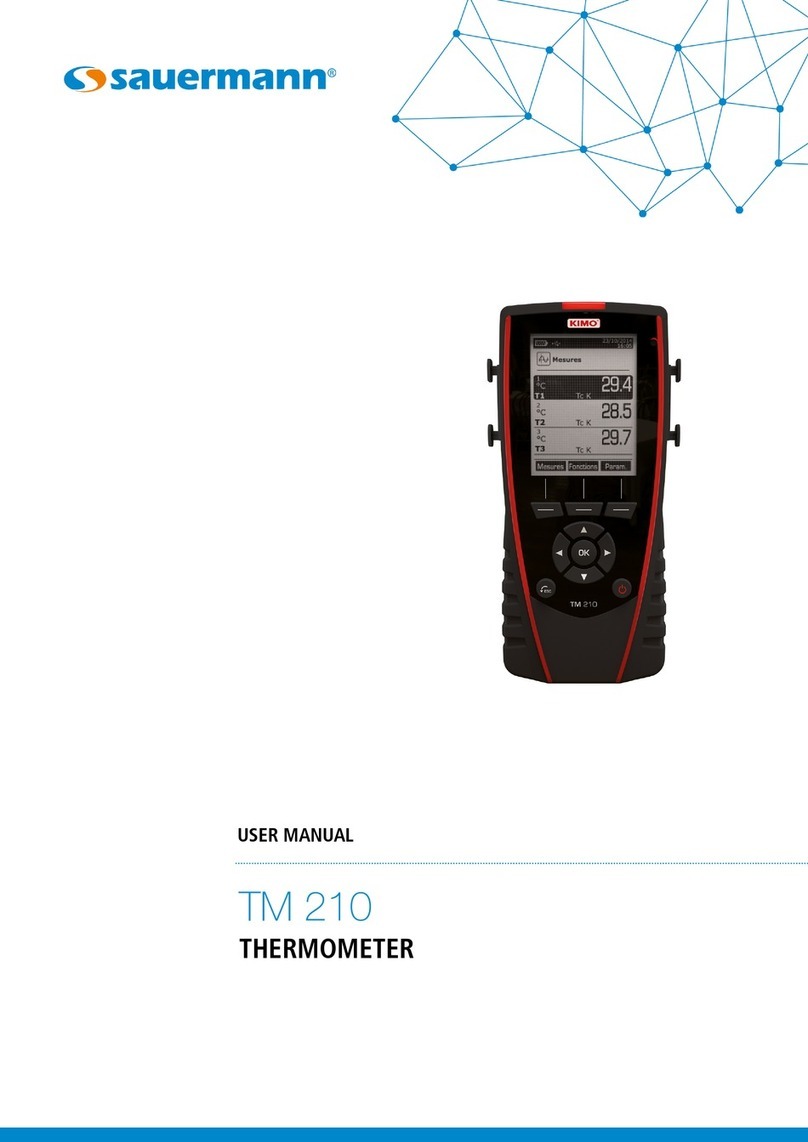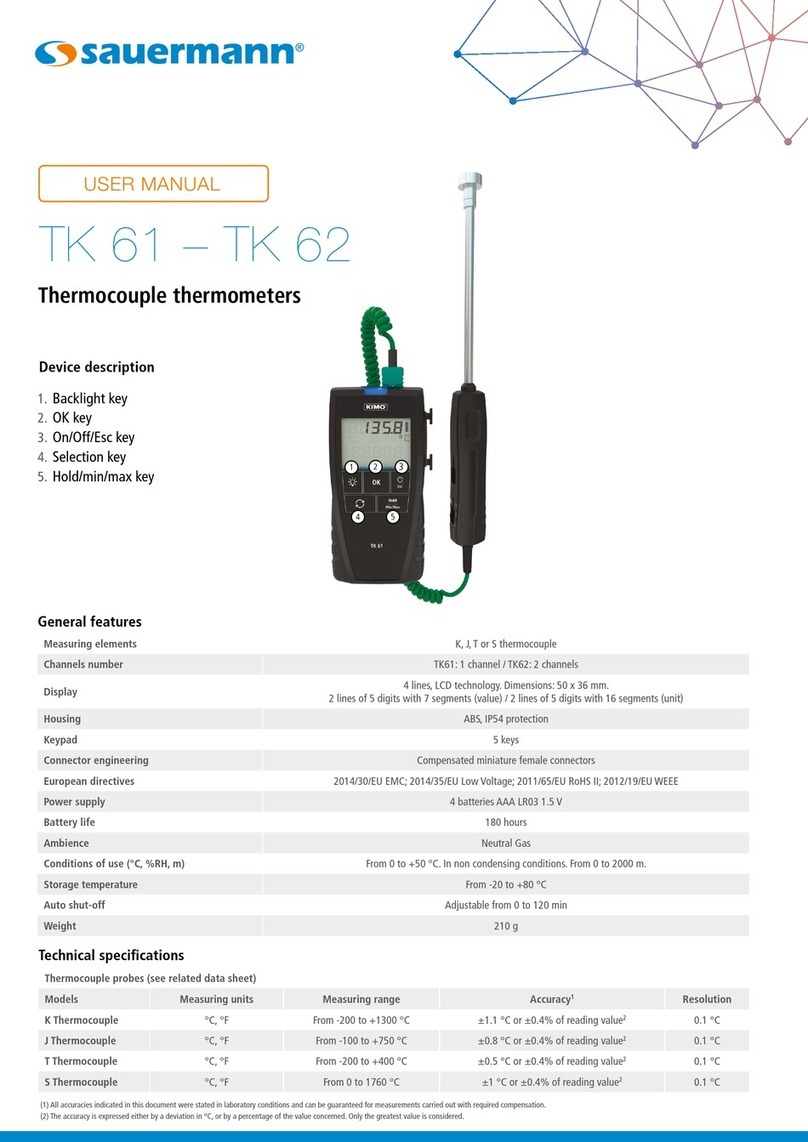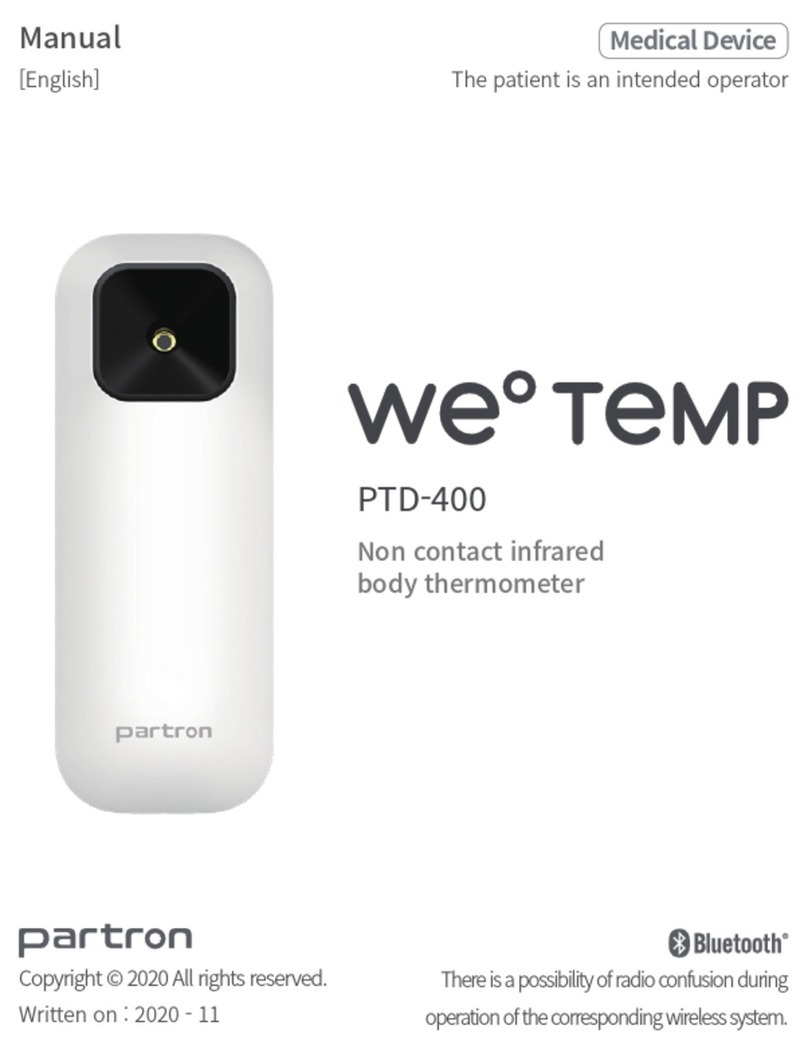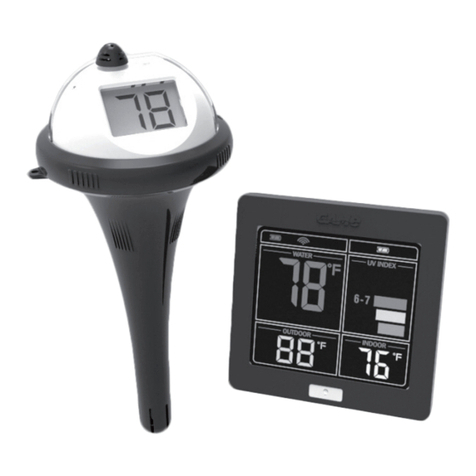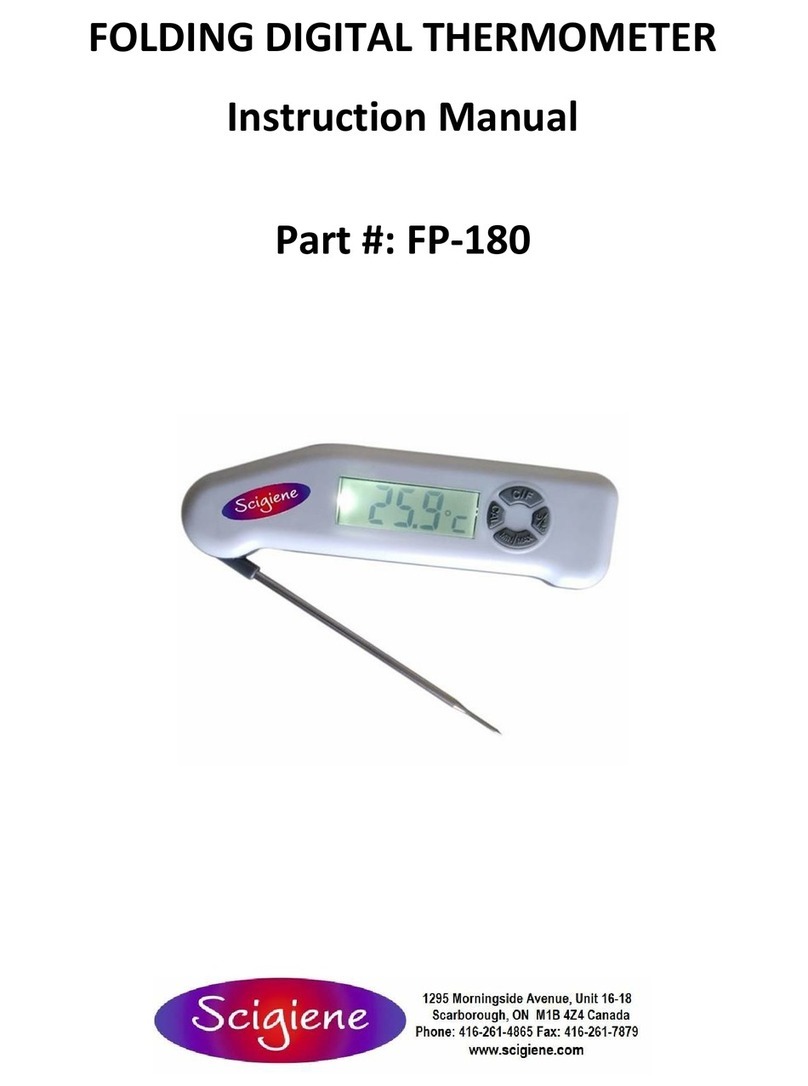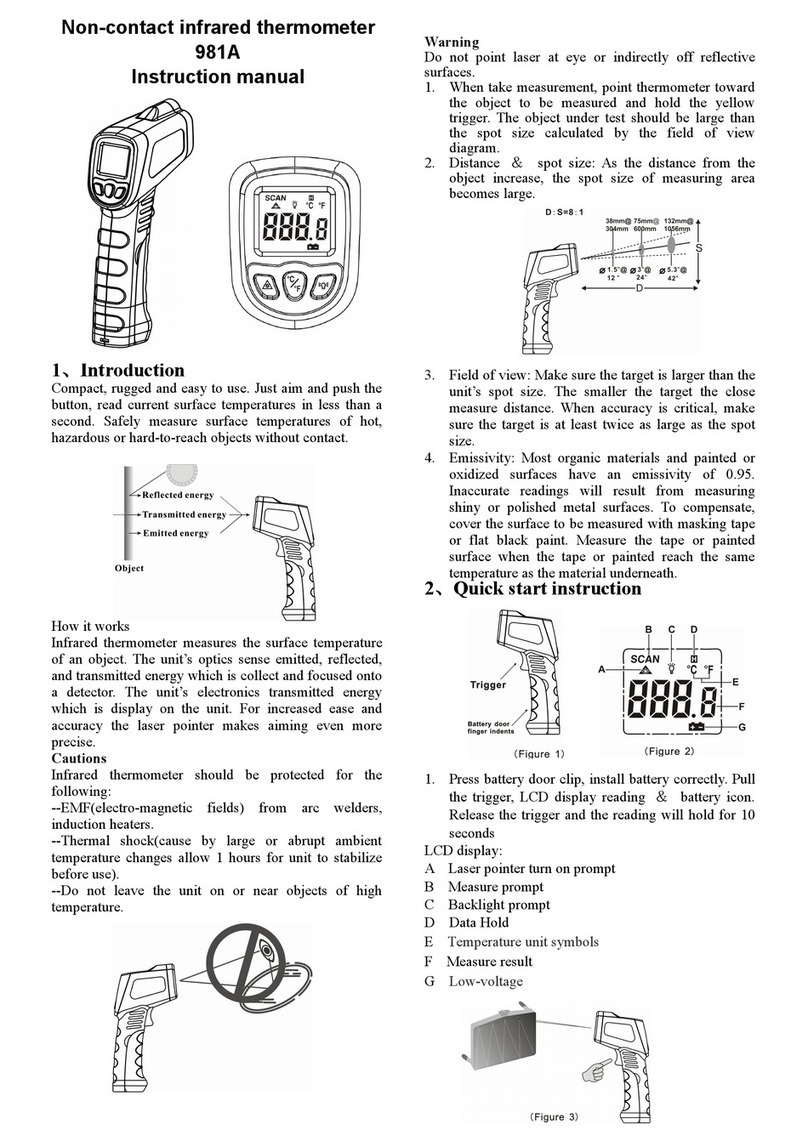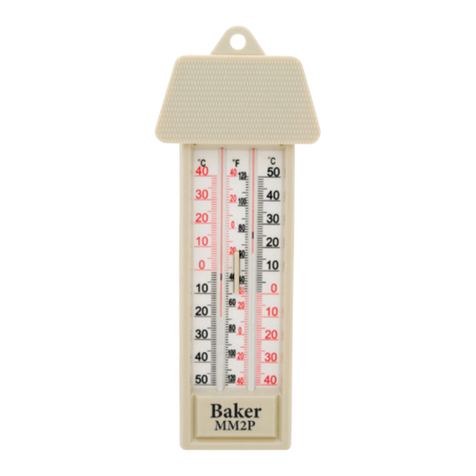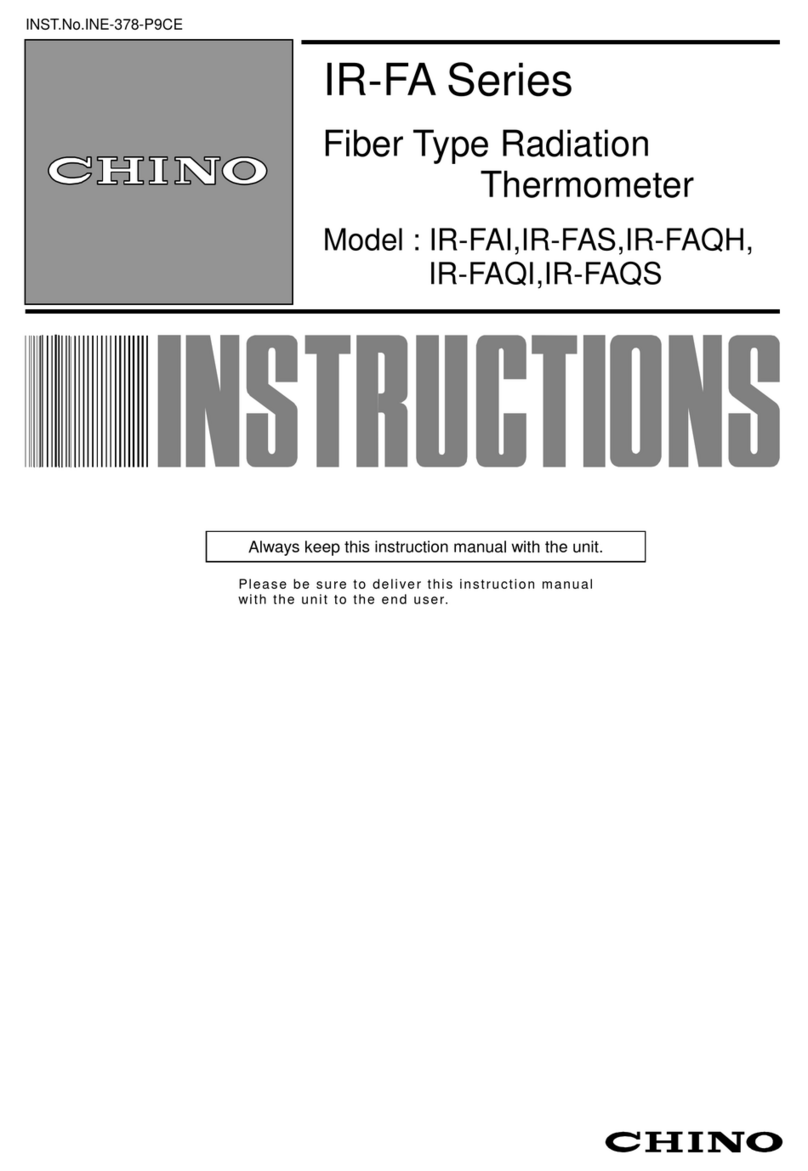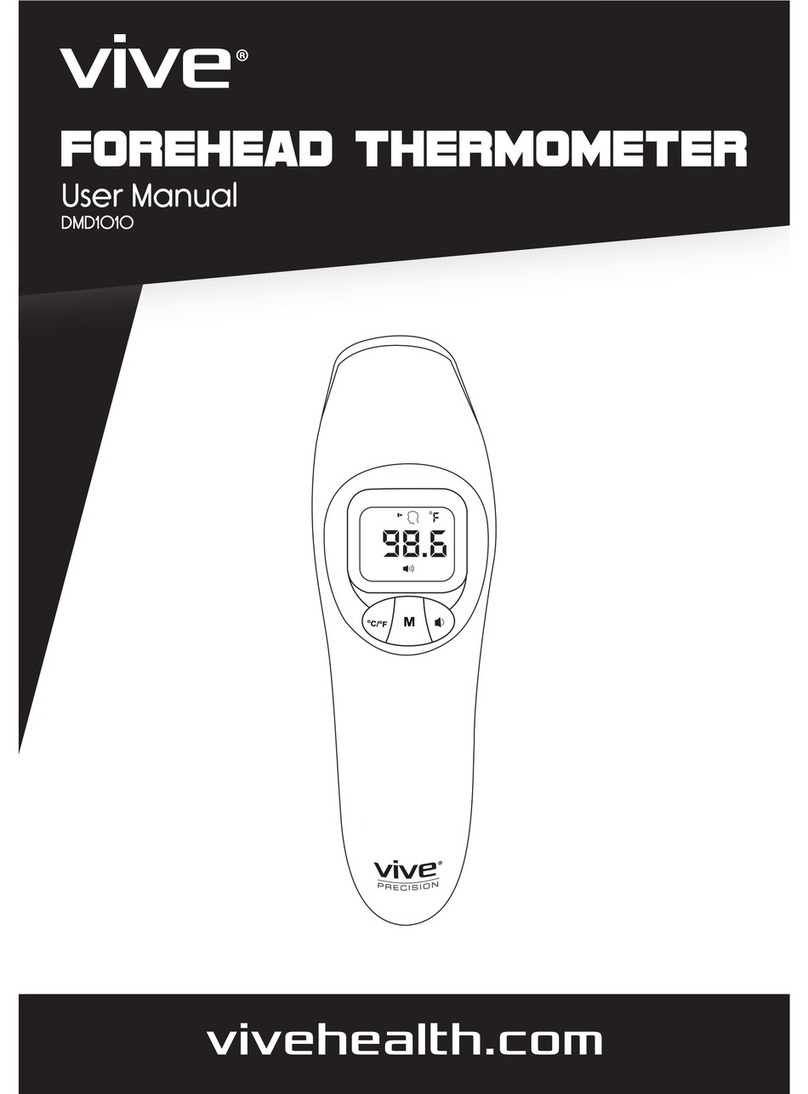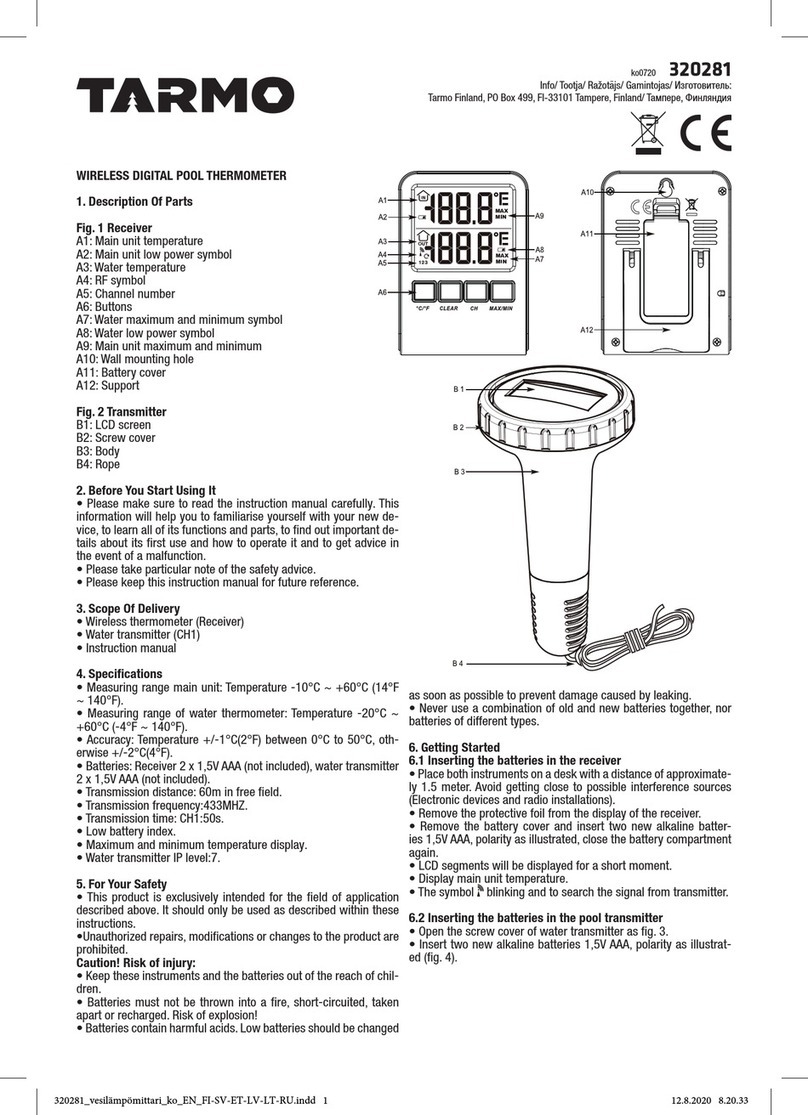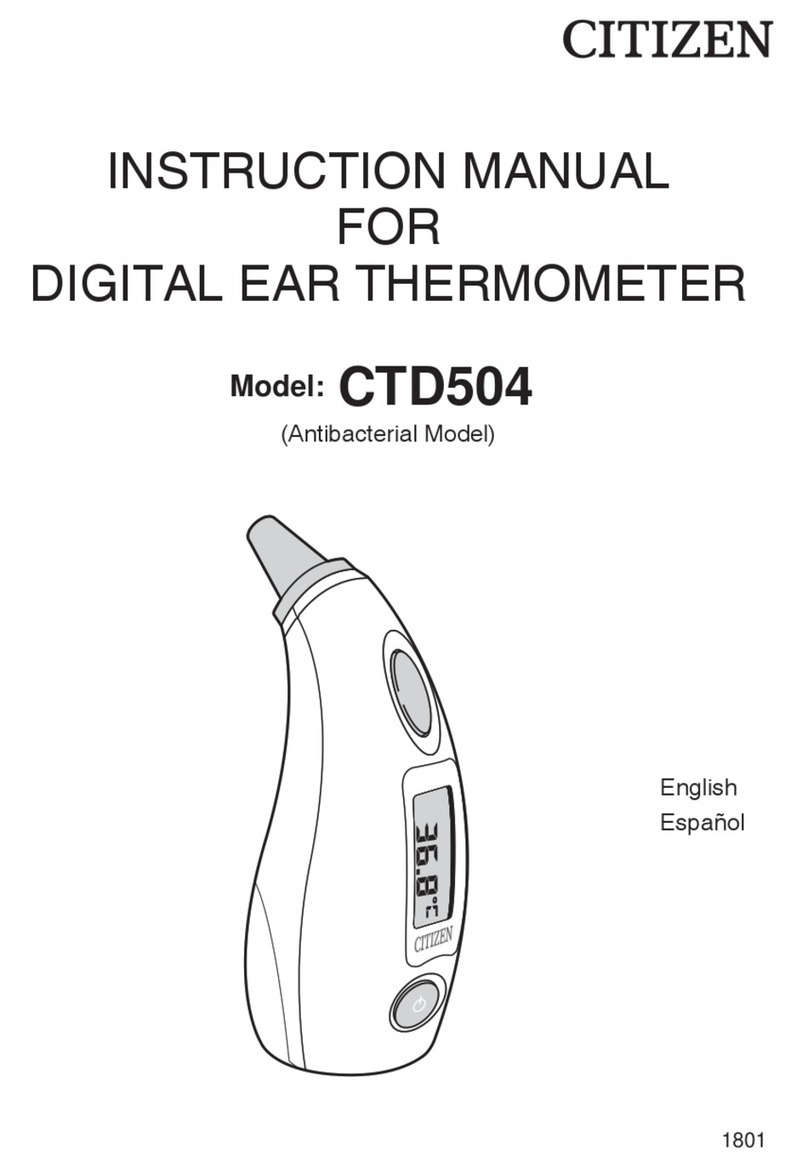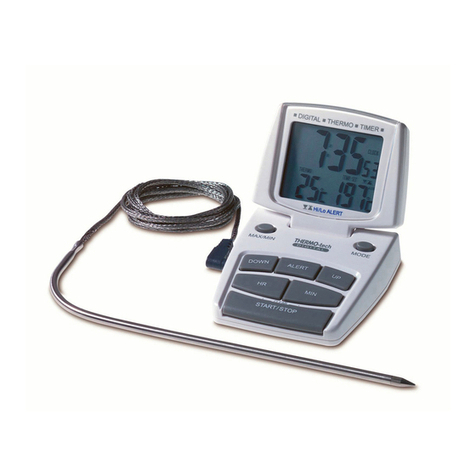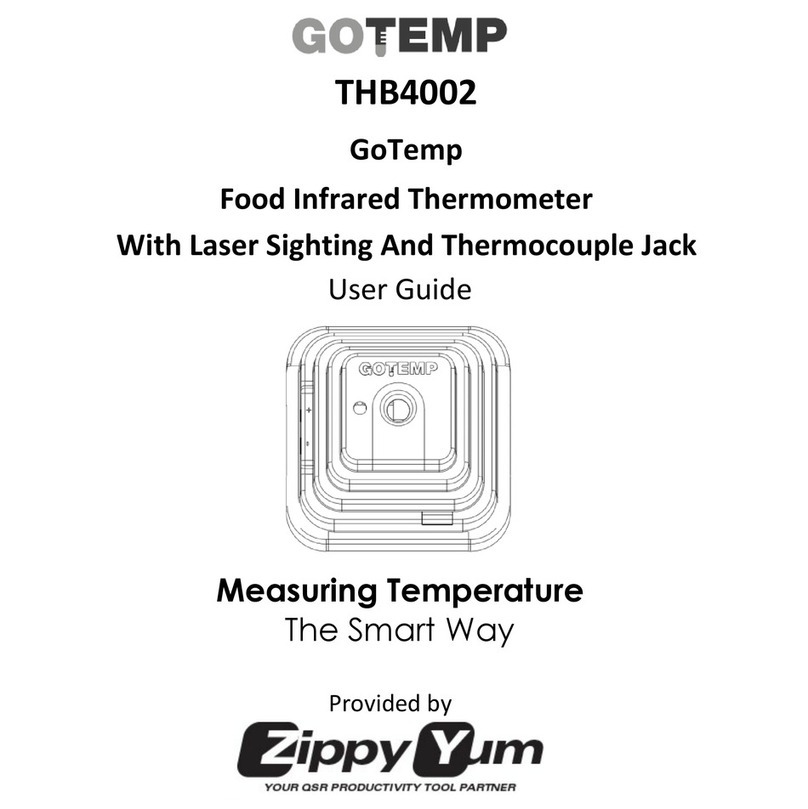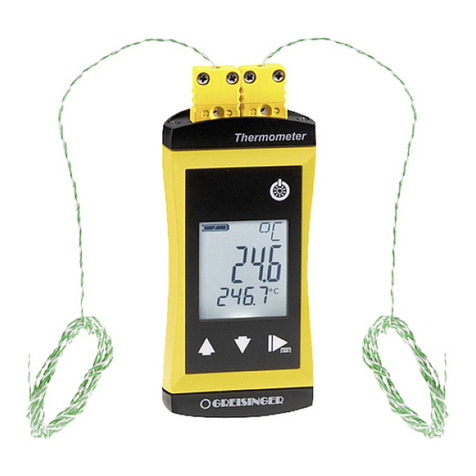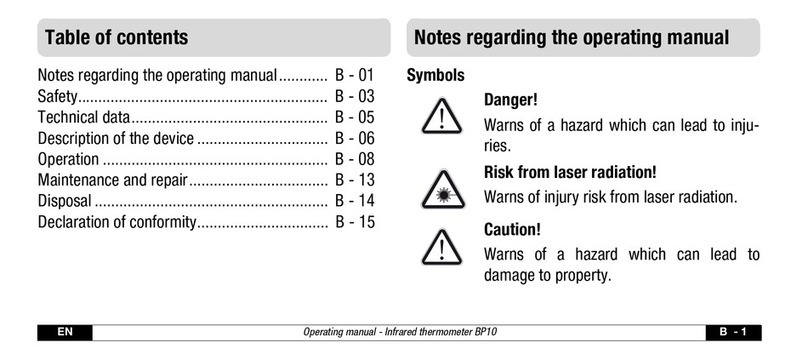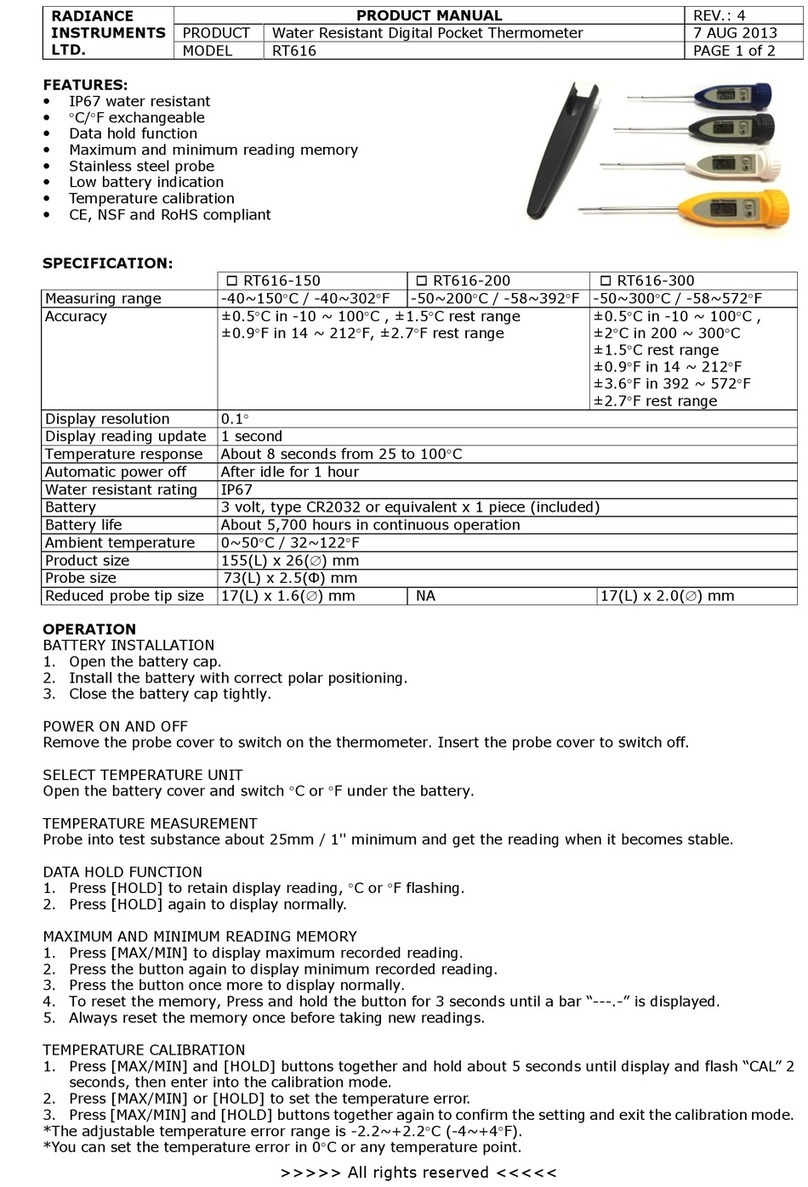
Important information
For correct measurements:
• Do not take any measurement on metal or shiny or
reective surfaces.
• Do not measure through transparent surfaces such
as glass, for example.
• Water vapor, dust, smoke, etc... may prevent correct
measurements because they obstruct the optical of
the instrument.
• Make sure that the target is larger than the size of
the laser sighting.
To avoid any inconvenience:
• Do not aim directly or indirectly (reection on
reective surfaces) the laser in the eyes.
• Change the batteries when the indicator blinks.
• Do not use the thermometer around explosive gas,
vapor or dust
• Do not leave the device with the lock on (lock
at the top right of the screen) because in this
conguration, the instrument does not turn
off automatically.
To prevent damage on your instrument or equipment
please carefully respect these conditions:
Maintenance
To install or change the 9 V battery, open the part near the
trigger and put it in the battery compartment.
Emissivity
Emissivity is a term used to describe the energy-emitting
characteristics of materials.
Most (90% of typical applications) organic materials and
painted or oxidized surfaces have an emissivity of 0.95
(pre-set in the unit).
Inaccurate readings will result from measuring shiny or
polished metal surfaces.
To compensate; cover the surface to be measured with
masking tape or at black paint.
Allow time for the tape to reach the same temperature as
the material underneath it.
Measure the temperature of the tape or painted surface.
See table below for values of emissivity of specic
materials:
Aluminum 0.30 Ice 0.98
Asbestos 0.95 Iron 0.70
Asphalt 0.95 Lead 0.50
Basalt 0.70 Limestone 0.98
Brass 0.50 Oil 0.94
Brick 0.90 Paint 0.93
Carbon 0.85 Paper 0.95
Ceramic 0.95 Plastic 0.95
Concrete 0.95 Rubber 0.95
Copper 0.95 Sand 0.90
Dirt 0.94 Skin 0.98
Frozen food 0.90 Snow 0.90
Hot food 0.93 Steel 0.80
Glass 0.85 Textile 0.94
Water 0.93 Wood 0.94
Fresh foodstuffs between 0 and 5 °C 0.90
Infrared thermometer, how does it works?
Infrared thermometers can measure the surface
temperature of an object. Its optic lens catches the
energy emitted and reected by the object.
This energy is collected and focused onto a detector.
This information is displayed as temperature.
The laser pointer is only used to aim at the target.

